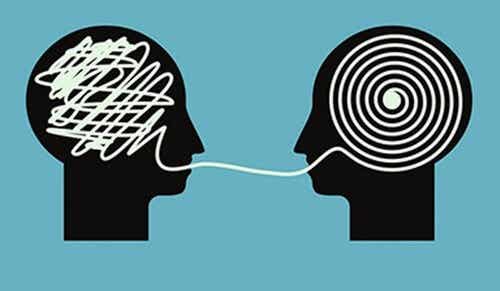When a person makes a mistake and we want to point out his mistake, we must do it with respect, assertiveness and empathy. It is equally important not to fall into moral pride because at times we may find that we are wrong.

Written and verified by the psychologist GetPersonalGrowth.
Last update: July 26, 2022
We should all learn a find the right (and respectful) way to correct someone who perseveres in a mistaken belief. We are living in times of false news and it is easy to take wrong information for granted. Fighting against that constant need most of us have to "be right" is a tall order.
Admitting that we are sometimes wrong is essential. This exercise of true modesty takes effort, there is no doubt, and if it is already difficult for us to admit that to err is human, it is even more difficult to point out to others their erroneous ideas. How to do this without giving rise to a discussion? Are there any strategies to make a person notice their mistakes without surfacing tensions and negative emotions?
Ultimately, it is knowing how to prepare fertile ground for dialogue, in which respectful communication flourishes, and also assertive, in which ideas flow and arguments are adequate. Let's see how to do it.
Strategies for correcting a person who continues to have an erroneous belief
We all want to be right. Defending our truth is a virus that spreads; we cling to our ideas like a sail to its mast, like a flame to its match. Admitting the error, for many, means showing themselves vulnerable and hardly anyone likes to be contradicted or to witness a demonstration of the error of their judgment or their own observation.
Therefore, some more some less, we all found ourselves having to correct a person who persisted with a wrong idea. For example, it often happens with the people we care about. It happens when, despite having lived the same experiences, everyone has a different memory and someone falls into the so-called "false memories".
Whether it is our partner, our father or our best friend, anyone can have confused dates or situations and then we find ourselves having to convince them that certain things have never gone the way they say. Not doing it right, though, will likely spark discussions.
Another example in this field may concern the workplace. Who hasn't had the pleasure of proving to a colleague that what he was saying wasn't true or just wasn't?
For most of us, these situations are familiar and, let's face it, we'd like to be able to handle them more confidently. So let's see some key concepts.
Start with a positive affirmation, don't point directly to the error
In order to correct a person who persists with a misconception, it is not recommended to start with expressions such as "So what you are saying is not true", "It is not so", "Look you're wrong", etc. The terms "no" and "bad" will predispose the other person to get defensive even before starting.
The ideal is to be skilled and to argue with empathy, making the most positive entrance possible. For example, “Yes, it is true that we went to that place to visit it, but it is also true that we stayed in a rather old hostel. In this sense, I agree with you. Now, your brother wasn't there on that trip because at that time he was still working in (…) ”.
To correct a person who holds a mistaken belief, one must pay attention to one's tone of voice
When we correct someone, when we point out his / her mistakes, it is very easy to use, almost instinctively, an authoritarian, ironic or provocative tone. This should be avoided 100%.
The tone of our voice is as important as our arguments, which is why it is essential to show closeness, empathy and calmness when communicating.
Argue and offer data, otherwise your own truth will be no more valid than that of the other person
When you want to correct a person with an erroneous belief, it is not necessary to tell her clearly that we are the ones who have the truth in hand. Because a truth without arguments remains in vain, a fact without supporting data is smoke coming out of a window.
To show (without imposition) and prove that we are right, we need to offer solid arguments. And to do this, you need to communicate, give detailed and objective information in an assertive way. At the same time, it is essential to listen empathically in order to be able to respond adequately.
We admit that we can't always convince the other
Actually sometimes it can happen: we don't always manage to show the other his mistakes. Thus, in an attempt to correct a mistaken belief, we must admit that some do not like to see things differently. This happens, for example, in more sensitive cases such as those in which a person defends the no-VAX movement or with Jehovah's Witnesses and the problem of blood transfusions.
There are facts that we cannot understand and that enter the field of values, religion, fanaticism and those ideological misunderstandings that are so difficult to defend. Showing the error to those who make an impenetrable shield out of their false truths is often complex and exasperating.
In these situations, but also in other lighter ones such as those associated with false memories, we just have to accept the situation if the person does not give in. Whether we want it or not, we are almost obliged to live in a world in which, often, everyone defends their own false truths.
As far as we can, we will try to debate calmly and intelligently, with wisdom and assertiveness. But if it should all be in vain, the ideal will be to withdraw when we are still unscathed and after having made a low emotional sacrifice.


























